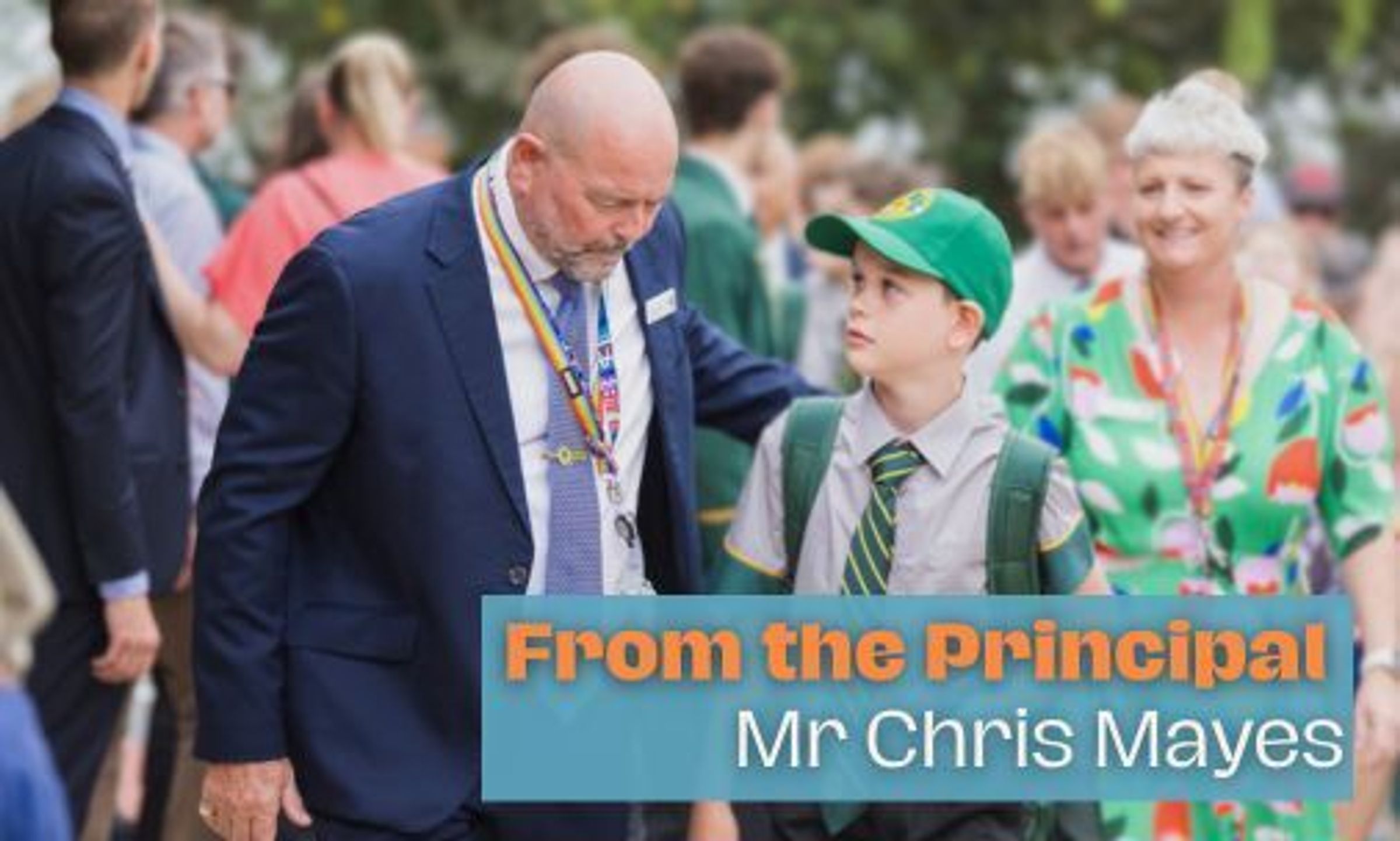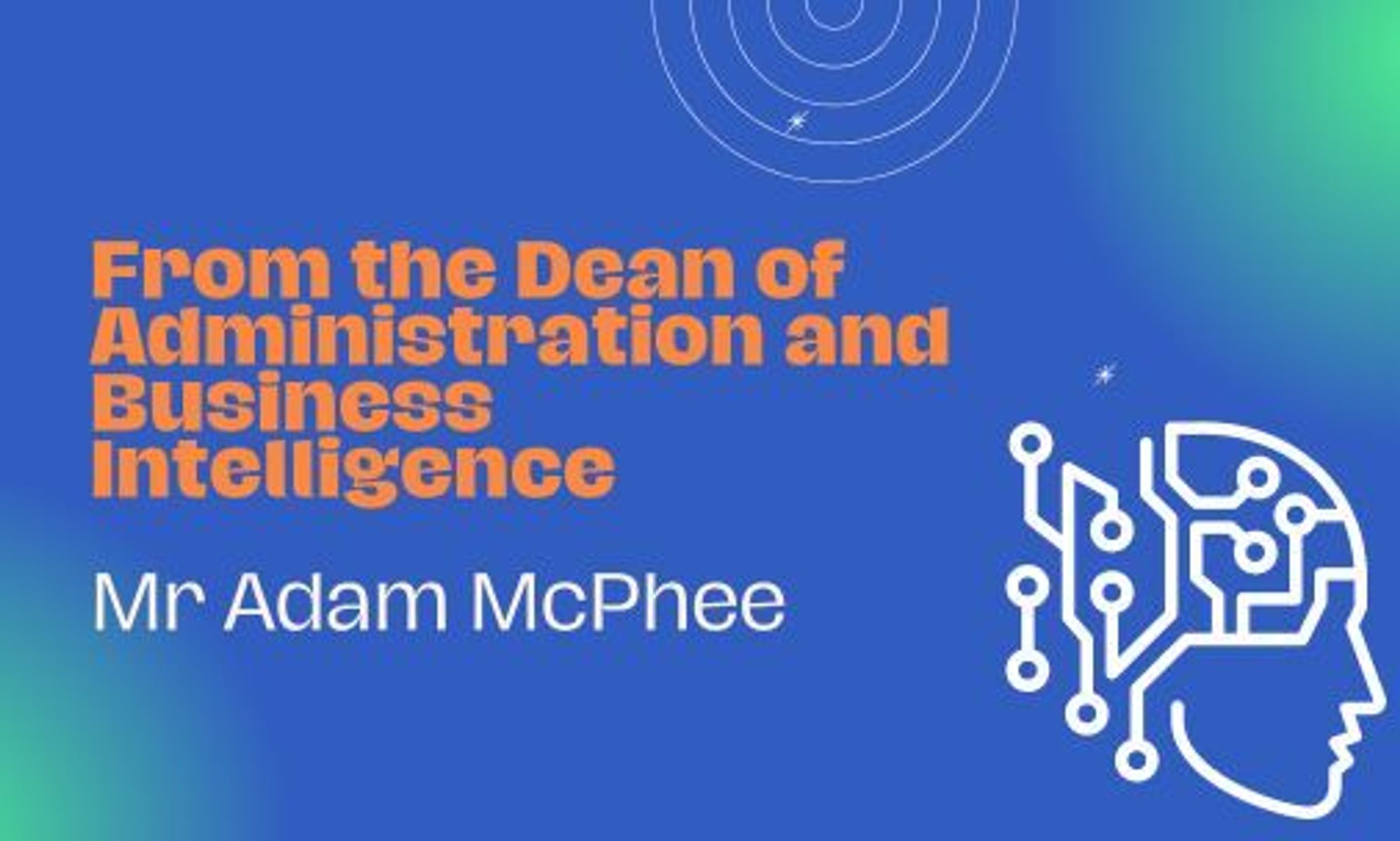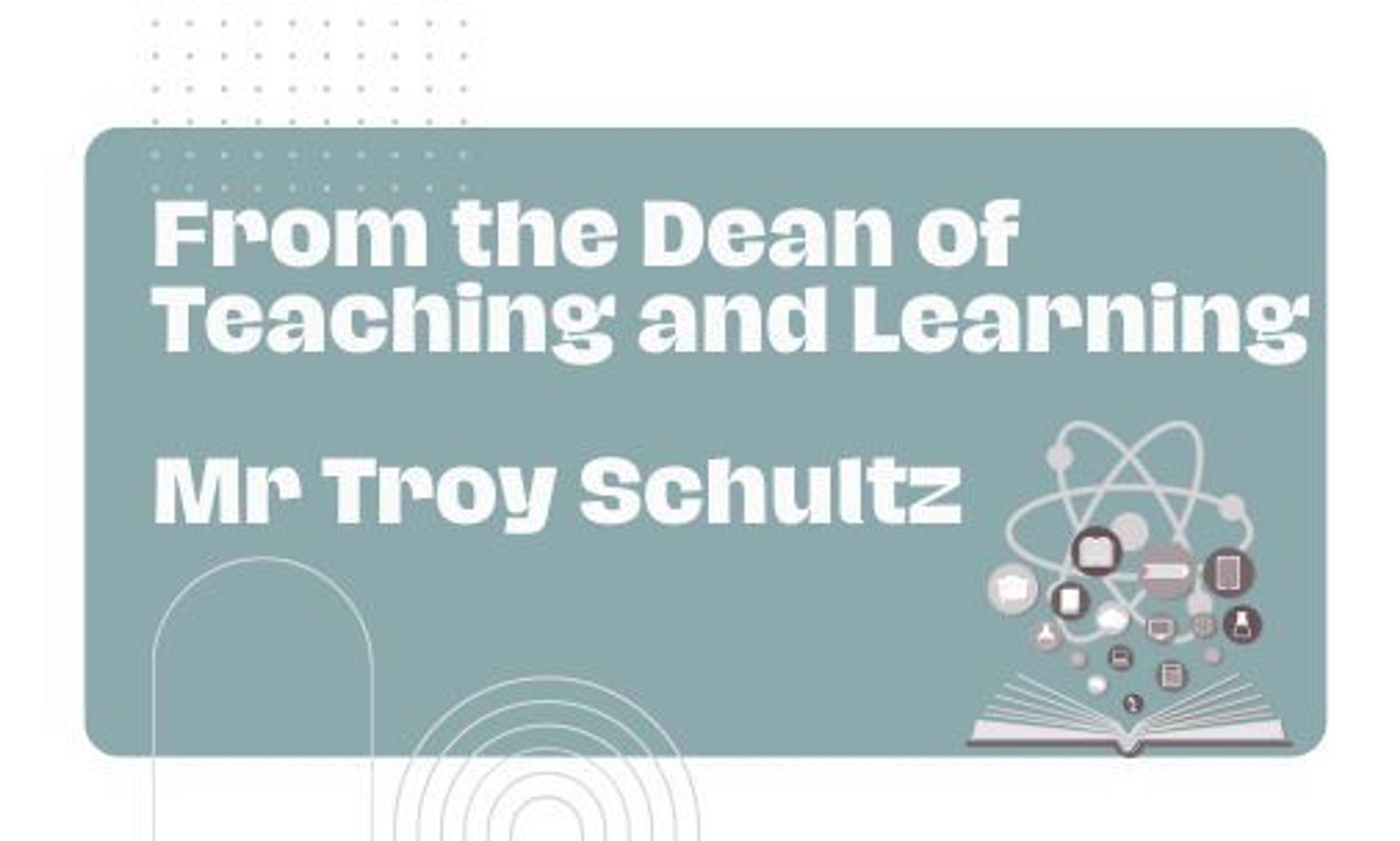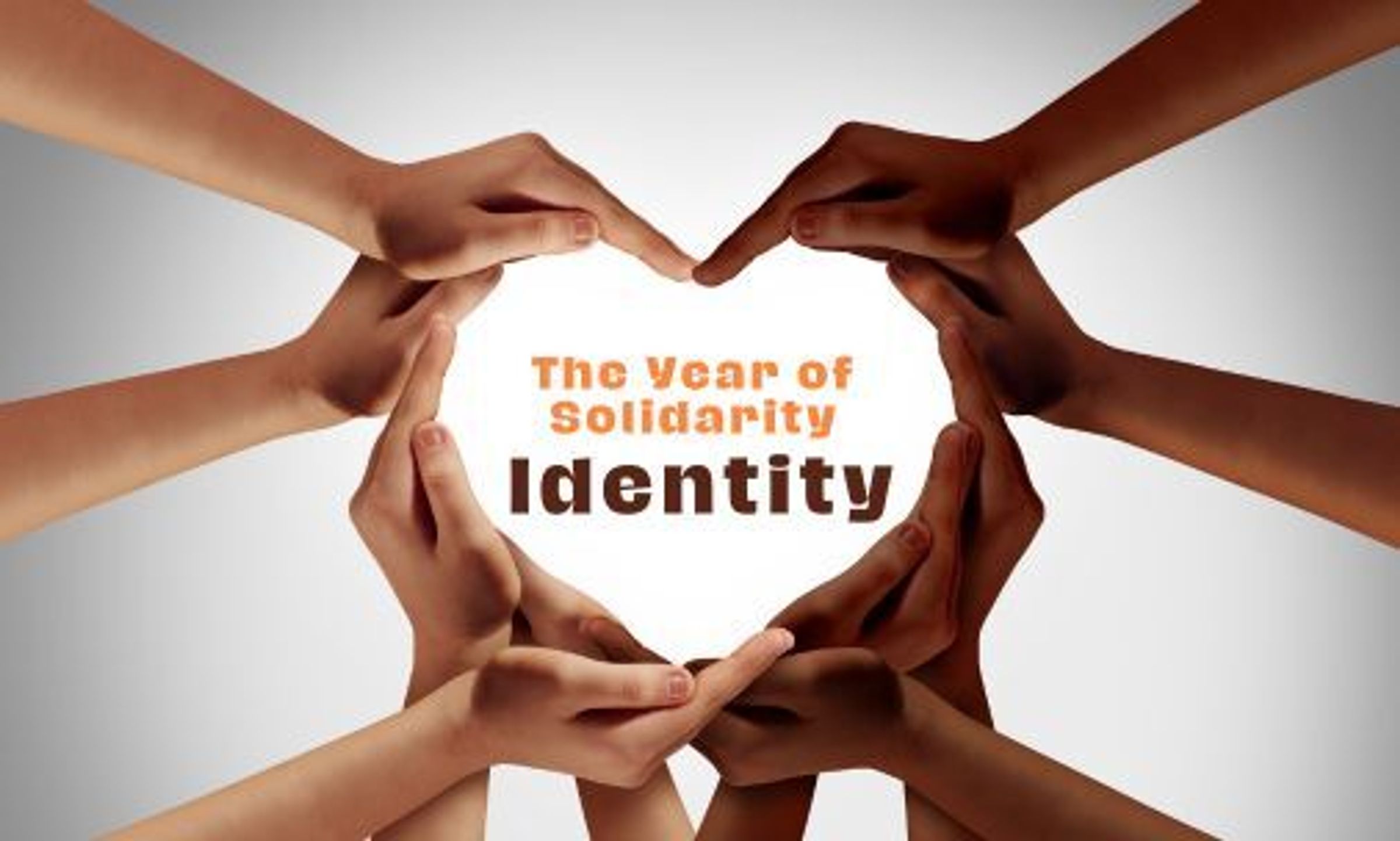This Week
From the Principal: Term 3 - Week 1

Welcome back to another term and the second half of the year. The second part of that sentence sounds quite scary! I hope that everyone had the chance to have some time with their children over the holiday break. A warm welcome also to the students and families who are new to our community.
I am sure that most people within our community have heard various people use the phrase that St Patrick’s “is a Catholic School in the Edmund Rice Tradition”. However, I am not sure if everyone knows what that really means and the affects it has on what we do on a daily basis. Last year, I graduated from the Australian Company Director’s (AICD) course. I found it refreshing to do a course with other leaders outside of the education sector. I have also done other studies within the business sector, and I have found that, whilst we have much to learn from each other, there are some real differences in our daily practices. One thing that is firm in both sectors is that people who work in an organisation, especially their leaders, need to have clarity about the mission and purpose of the organisation. It is the mission and purpose of an organisation that should be the clear driver of the culture of that organisation. Consequently, I believe that it is important that everyone within our community understands what the mission of a Catholic School in the Edmund Rice Tradition really is because it drives our practices and decisions here at St Patrick’s College.
Our beliefs and traditions are founded on the teachings of Jesus Christ and the Catholic Church, and our values are gleaned from the work and charism of Blessed Edmund Rice, the founder of the Christian Brothers, and the works and traditions of the congregation of the Christian Brothers. Edmund Rice Education Australia (EREA) is an entity set up by the Christian Brothers in 2007 in response to their declining numbers and, consequently their inevitable withdrawal from schools. Currently, there are very few schools in Australia that have a Christian Brother on campus or staff.
The mission of a Catholic School is to educate students with a Catholic Worldview (Bishops, 2013; Catholicschoolsparra, 2013; College, 2006; Collins, 2023; Geusau & Booth, 2013; Rockhampton, 2024). This means that a student is educated in a holistic way, focused on the inherent goodness and likeness of God (Catholicschoolsparra, 2013; College, 2006; Rockhampton, 2024). In our schools we meld this mission with the traditions of Edmund and the Christian Brothers and is best described as offering a holistic education that liberates, nurtures spirituality, embraces inclusivity, and champions justice. The four touchstones set out in the Charter for Catholic Schools in the Edmund Rice Tradition are used by us in planning and decisions to ensure our authenticity to our mission. The Charter states…
EREA offers a Liberating Education, based on Gospel Spirituality,
Within an inclusive community committed to
Justice and Solidarity.
The touchstones are (1) Liberating Education, (2) Inclusive Community, (3) Gospel Spirituality, and (4) Justice and Solidarity.
Over the remainder of this term, I will give greater detail of each of these touchstones because they are paramount to what we do and how we do things at St Patrick’s College.
Vale Br Denis Sullivan
Brother Denis is well known in EREA schools across NSW and Queensland. More recently he had strong ties with St Laurence’s College, Nudgee College and us. Br Denis was a Board member here from 2006-2020 and always attended our events at school, music and sport. Personally, I had the good fortune to know Denis for many years. He was a gentleman and a genuine brother who “walked the talk”. Br Michael Talty best summed him up when he wrote to the congregation and said…
“Throughout his life as a Brother, Denis was an authentic follower of Edmund Rice, a man faithful to prayer and to his God. Denis lived his motto: "Here I am, Lord... l will go if You lead me" – he was present, attentive to the voice of the Spirit and trusted in Divine Providence. He was a Christian Brother who put others first and always showed genuine concern and compassion for those he encountered be they student, staff, or fellow Christian Brother. May Denis now be at peace as he is welcomed into the loving embrace of the Lord he served so humbly and faithfully.
May our beloved Brother Denis Rest in Peace”
Staffing
I would like to welcome the following new staff who joined us at the beginning of this term:
Miss Chanae Gill: College Counsellor, Semester 2
Miss Laura McBeath: Creative Arts/HASS Faculty
Miss Caitlin Brannigan: Semester 2 - English Faculty
Mr Darcy Price: Semester 2 Mathematics Faculty
Ms Kim Murray: Creative Arts Faculty
Mrs Rachael Koop: English/RE Faculty
Social Media
In my final article for last term, I mentioned the concerns that our young people may be facing through their use of social media. I mentioned that I would expand on some of the matters that I mentioned during this term.
Firstly, I want to remind everyone that the legal age for students to have accounts with social media channels such as Facebook and Instagram is currently 13 years old.
The first concern I would like to mention is the distribution of inappropriate and/or illegal materials.
In Queensland, the legal implications for a person under the age of 16 sharing or receiving a nude picture of another underage individual are serious. It is a criminal offense to share intimate images without consent, and this law is particularly stringent when it involves minors. Under Queensland legislation, individuals under 16 cannot legally give consent for such images to be shared. If an underage person shares or receives a nude image of another minor, they could be charged with distributing child exploitation material (CEM), which is a grave offense including being placed on a Child Sex Offender register. Courts may also mandate actions to remove, destroy, or delete the images. It's important to note that even possessing such images can have legal consequences. Therefore, it is crucial for young people to understand the severity of these actions and the potential long-term legal and social repercussions.
When such instances happen in a school environment, it is a matter of mandatory reporting by us to the police and the person’s phone will be requested by the police. There is an added seriousness for us if the person uses our school devices to gather, hold or share such content.
I must stress that sharing nude photographs amongst young people is more prevalent than many people would be aware. Also, many do so under the impression that they are communicating with a person they think they know, even though they are often “online” friends. Finally, the young person believes that the other person would not consider sharing such a photograph or is blackmailed into paying an amount of money.
How can parents mitigate the chances of this happening?
- Recognise the Signs: Educate yourself and your children about the warning signs of sending or receiving such materials and how they will possibly be used. If it has happened to your child, look out for signs such as sudden changes in behaviour, secrecy around online activities, and unexplained requests for money or gift cards.
- Open Communication: Establish a 'tech-free zone' where devices are put away, encouraging face-to-face interactions and making it easier for children to share their thoughts without digital distractions. Actively listen and show genuine interest in what your children have to say, responding with empathy and without judgment, to reinforce that their thoughts and feelings are valued and important.
- Online Privacy: Stress the importance of privacy settings and the risks of sharing personal information and images with strangers online.
- Legal Knowledge: Inform your children about the legal implications.
- No Blame Policy: Assure your children that they can come to you without fear of judgment or punishment if they are ever feel uncomfortable about online situations.
- Reporting Mechanisms: Make sure your children know how to report any online abuse or threats to platforms and authorities including school personnel.
I hope that this is helpful and supportive information. I would also suggest that parents browse the government esafety website that contains numerous resources and advice for parents and children at Online safety | eSafety Commissioner.
Live Jesus in our Hearts!
Chris Mayes
College Principal
Curriculum
From the Dean of Administration and Business Intelligence

Welcome to Term 3! I pray the winter break afforded you and your family an opportunity to slow down, relax a little and enjoy the cooler weather.
As we head into Semester Two, you will have accessed your son’s Semester One/ Unit 1 report card and teachers will have reviewed cohort, class and individual student results to inform their teaching and prepare for Parent Teacher Interviews. Students across Year 5-11 will also have had the opportunity to reflect on their results, persistence, effort and attitude and set goals for the semester. All of this information becomes a rich and valuable source of information for teachers to work with and support your son in achieving his goals.
The Parent Teacher Interview is the ideal opportunity to strengthen the partnership we share and look at opportunities available to your son to improve his results. You may want to consider discussing the following with your son and his teachers:
- The goals your son has set
- These goals are available in Analytics (Realm)
- The goals the teacher has set for your son
- Discuss what he is capable of achieving and what he needs to action to make this a reality.
- What homework for individual subjects looks like
- Weekly/ fortnightly/ sporadically
- What does studying look like?
- Practice testing
- Spaced repetition (flashcard and recalling older material to bring it into the long term memory bank)
- Creation of study guides
- ATOMI and Education Perfect
REMINDER: Year 12 students will be working from home across periods 1, 2 and 3. Year 12 teachers will post their lesson on Realm class pages for students to access and complete.
Mr Adam McPhee
Dean of Administration and Business Intelligence
From the Dean of Teaching and Learning

Careers and Pathways from SPC to beyond the gates
This term, our cohorts within years 7-12 engage in programs designed to increase their career awareness and therefore make informed decisions about their subjects as they progress through their schooling journey. However, this program is more than just making decision about subject selection. The program is one part of the journey our young people take towards being Men of Action.
Our goal is for our students to make informed decisions about their pathway – driven by curiosity, self-awareness, aspiration and confidence - to be agents of change within themselves and the world in which they will continue to live, learn and work beyond school. When making decisions about their subjects, we ask students to first and foremost make decisions that feed their heart and their mind. We want students to engage with subjects that they enjoy learning within, and that match their abilities and interests so that they benefit the most out of their learning.
The landscape beyond school continues to change and in current times this change can be unpredictable and is always rapid. To future proof our young people’s ability to be happy and to ensure they have the motivation to make a difference, we must challenge young learners to focus on their knowledge and skill development, both in an outside of the classroom. We must challenge them to learn more about who they are, and what it means to be human in their world. To be future proof, young people must be ethical and creative users of technology, they must be able to communicate using a variety of methods, and they must have the belief and the capacity to learn, unlearn, and relearn.
We hope that our students recognise the important place they hold within our community. Our community is a special place because of what each person brings to it. We want our graduates to recognise this uniqueness, and how their own contribution has shaped the sense of community that exists at SPC. If our graduates leave recognising their own story of what it means to be a Man of Action, and this story empowers them to take on their world beyond school with confidence and happiness, then we know that the world will be a better place as a result.
Mr Troy Schultz
Dean of Teaching and Learning
Identity
From the Head of Ministries

At the beginning of the school holidays, I was fortunate to attend the Bunya Mountains and Cherbourg Immersion with seven students and three staff members from St Patrick’s College. Although we have run similar programs in the past, this is the first year that the program has been run in this format. In honour of NAIDOC week, I wanted to share a celebration of what this immersion, and immersions like it, mean for us as a College and as a community.
When Mr Kenny first asked me to lead this immersion, I was incredibly excited. Although, I now live in Brisbane, I grew up in Nanango which is located about halfway between the Bunya Mountains and Cherbourg. I was proud to have an opportunity to share such a big part of my life with staff and students from SPC. Reflecting on my time growing up in the South Burnett and preparing for the immersion, I realised how many gaps existed within my formal education about Aboriginal and Torres Strait Islander peoples and the cultural heritage that is so deeply connected to Wakka Wakka Country where I grew up.
On the first day of the immersion, staff, students and parents met at the College for a short departure ceremony. During this time, parent and former staff member, Clinton McGoldrick, provided a blessing of the symbols of connection which were given to parents as a reminder of the connection they had to their son. After the ceremony, we travelled to the beautiful Bunya Mountains where we met with Wakka Wakka Elder, and custodian of the Bunya Mountains, Shannon Bauwens.
When I lived in Nanango, the Bunyas were a place of recreation with days spent meandering the forest with family and friends. It wasn’t until I was an adult that I became aware of the ancient cultural and spiritual significance of the Bunyas to Australia’s First Peoples. For thousands of years the Bunya Mountains has been a gathering location for First Nations groups and families from all over what is now known as Queensland and northern New South Wales. People would make the long journey to the Bunya Mountains every three years inline with the bumper crop of Bunya Nuts which would ensure sufficient sustenance for the people gathered.
As it is now known, the Bunya Festival was important for maintaining connections between groups, trading resources, sharing skills and for practicing culture through ceremony, storytelling and dance. Shannon continues this tradition with his work through the Bunya Peoples Aboriginal Corporation, a group which works alongside the management of the National Park to reintroduce traditional practices of Caring for Country. Shannon imparted a lifetime of knowledge with the easy grace that comes with a deep understanding, love and respect for Country.
For me, this is something to celebrate. That despite the impact of colonisation on Country and the environment, something you become keenly aware of traversing through the Bunya Mountains. Aboriginal and Torres Strait Islander knowledges and traditional practices are alive and well. No longer practiced in isolation or in secret but are taught to non-Indigenous Australians and becoming woven into the systematic management of Country.
On the second day, we travelled to Cherbourg. As a young person growing up in the South Burnett, there was a definite sense of the disadvantage of Cherbourg as a town and its people. There were very few stories of the inherent strength and resilience of Aboriginal or Torres Strait Islander people and cultural practices were hidden, only conducted out of sight. The sense of shame that permeated Cherbourg was a long-engrained impact of colonisation. For most of its history, Cherbourg was managed as a mission by non-Indigenous Australians, with the result that Aboriginal and Torres Strait Islander inmates were forced to suffer through harsh living conditions, separation of families, dispossession of land and extreme restrictions in every element of daily life.
While the history of Cherbourg and the treatment of Australia’s First People is an unhealed wound in the fabric of Australian society, modern-day Cherbourg is an example of truth-telling, self-determination and Reconciliation. As a school, we are proud that our students learn about the World’s Oldest Surviving Culture through meaningful and authentic experiences, such as the Bunya Mountains and Cherbourg Immersion, and witness First Nations’ cultures as alive, thriving and resilient.
We are excited to continue offering these opportunities for students as we continue to stand in solidarity with Australia’s First Peoples.
Mrs Tara Dunn
Head of Ministries



